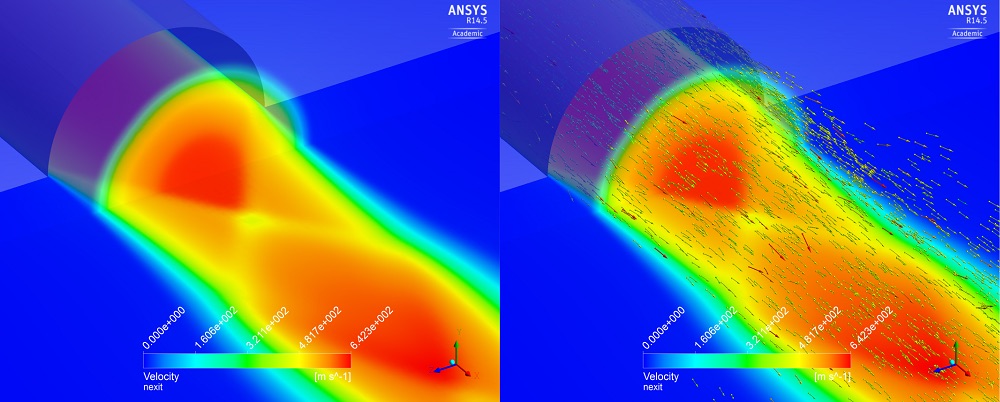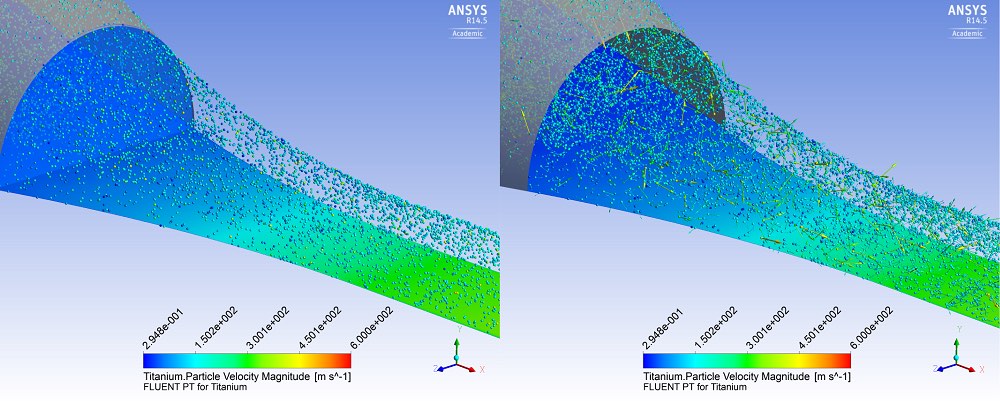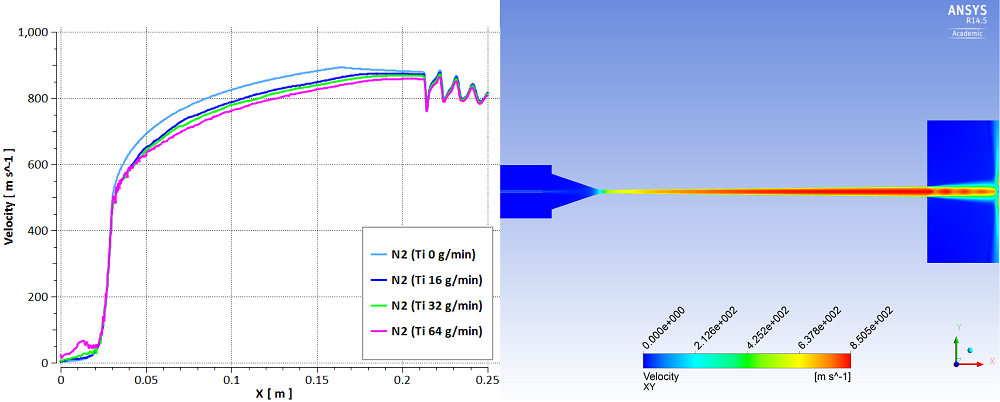Supersonic Spray Advanced Modelling - SSAM
Project Coordinator
Dr. Rocco Lupoi
Email: [javascript protected email address]
Tel: +353 1 896 1729
Mr. Morten Meyer
Email: [javascript protected email address]
Tel: +353 1 896 3431

Description
Cold Spray (CS) is a coating and additive manufacturing technology that involves the high kinetic energy impact of particles onto substrates below melting temperatures (see a detailed a description here). The improvement of CS makes a profound understanding of the flow inevitable. The efficiency of the material deposition is mainly influenced by the speed and temperature of impacting particles. Those quantities are results of many complex interacting processes during the acceleration within the nozzle, such as:
- Extreme changes of flow properties
- Compressibility effects
- Flow stability and turbulence
- Phase interaction mechanisms
The ability to control these aspects is highly important for the control of deposition, which firstly motivates a detailed computational description of the process. Nonetheless, the numerical modelling of such multiphase flows is challenging. Conventional methods either represent an insufficient set of physical properties or their validity is inherently restricted to special cases due to basic assumptions.
This project hence aims to develop, validate, and optimise a Computational Fluid Dynamics (CFD) environment that enables the prediction of the main CS process parameters with respect to the apparatus design and the set-up conditions. In this concern, a major task is an adequate treatment of the particulate phase in the distinct regions of the flow field under varying conditions.


 The longitudinal and cross sectional velocity contour plots at the nozzle exit region show the shock-expansion-pattern due to over-expanded flow. At very high loadings of the second phase, the particles exhibit significant three-dimensional movements.
The longitudinal and cross sectional velocity contour plots at the nozzle exit region show the shock-expansion-pattern due to over-expanded flow. At very high loadings of the second phase, the particles exhibit significant three-dimensional movements. The particulate phase is most dense where the flow undergoes the most extreme changes: in the throat region. In the upstream part, the particle-particle and particle-fluid interactions entail non-uniform movements. The downstream zone is characterized by the interdependent alteration of the gas and particle dynamics.
The particulate phase is most dense where the flow undergoes the most extreme changes: in the throat region. In the upstream part, the particle-particle and particle-fluid interactions entail non-uniform movements. The downstream zone is characterized by the interdependent alteration of the gas and particle dynamics. The gas velocity along the nozzle and jet axis decreases as the particle loading increases, since more energy is transferred to the kinetic energy of the particulate phase or dissipated due to turbulence. The particle injection and jet impingement are additional complex issues that are illustrated on the right.
The gas velocity along the nozzle and jet axis decreases as the particle loading increases, since more energy is transferred to the kinetic energy of the particulate phase or dissipated due to turbulence. The particle injection and jet impingement are additional complex issues that are illustrated on the right.